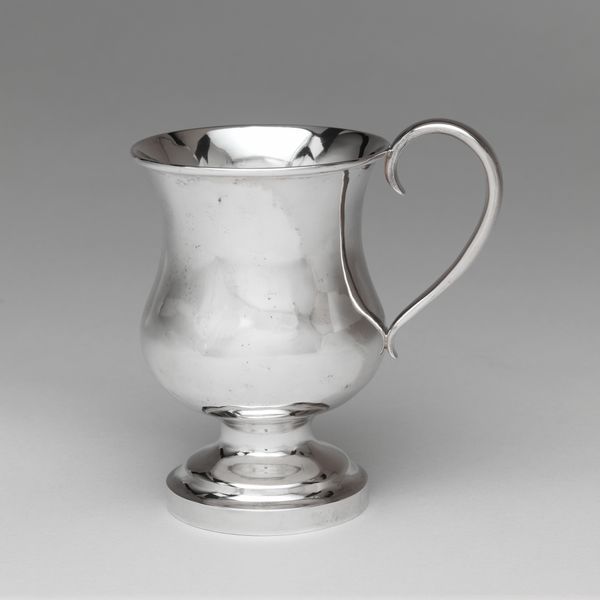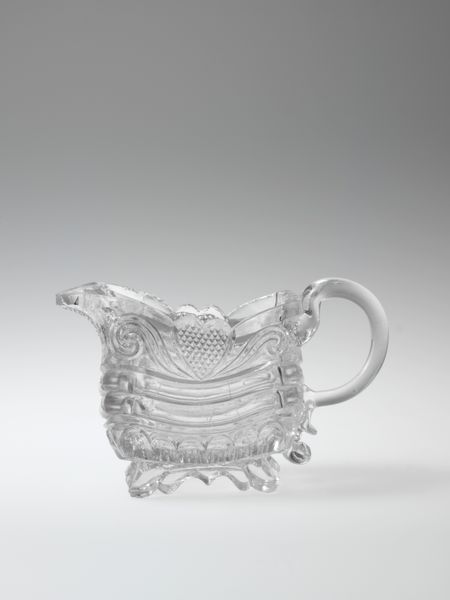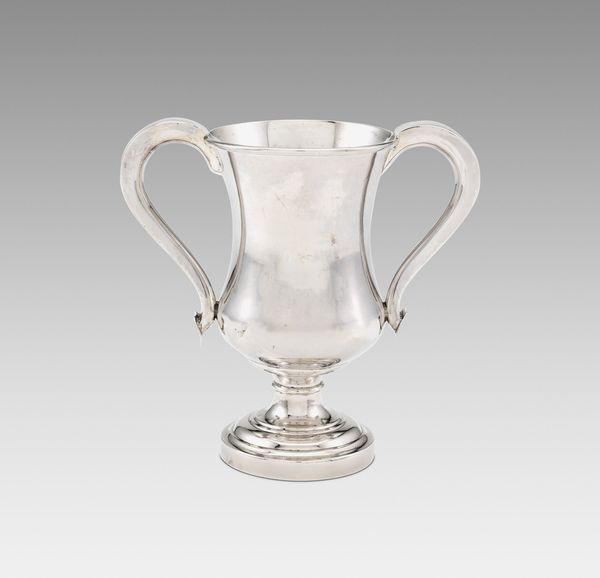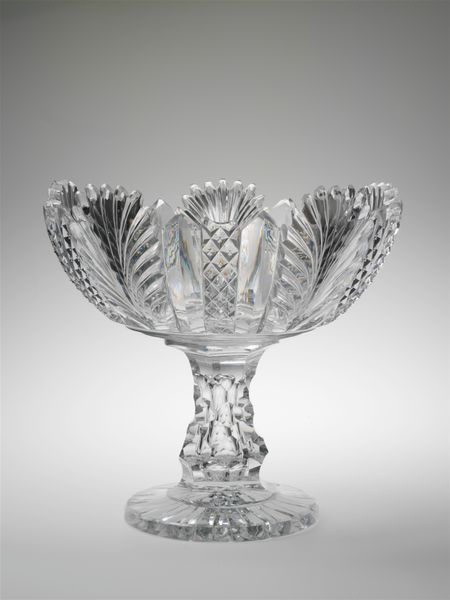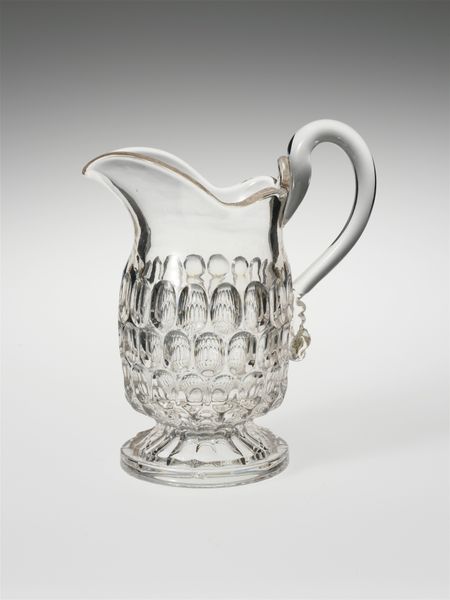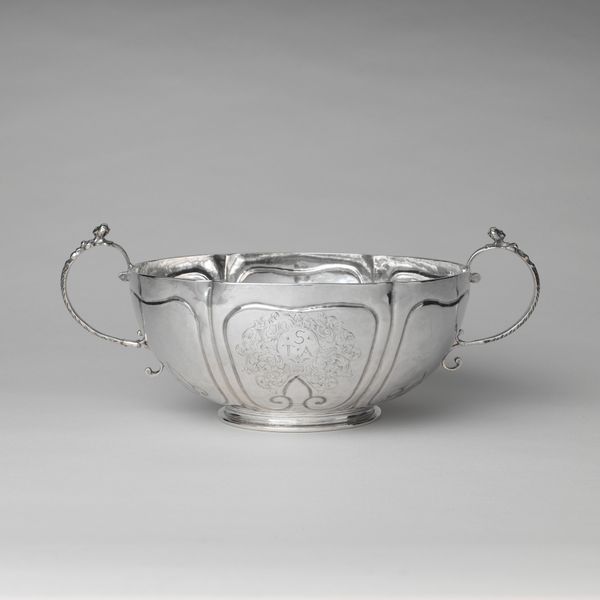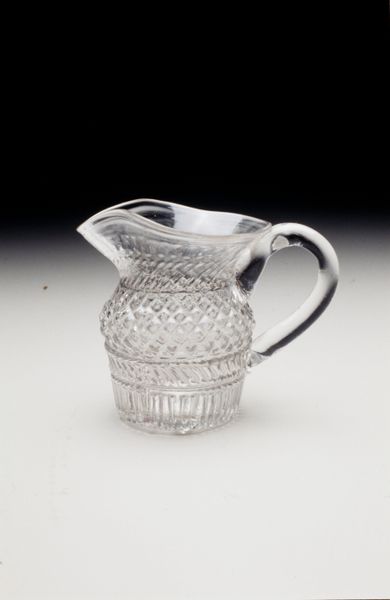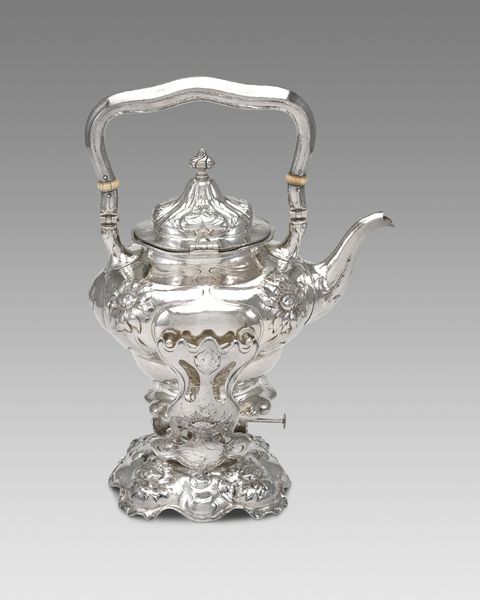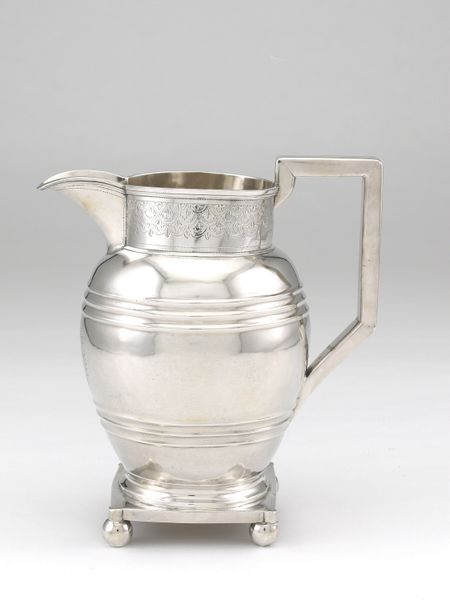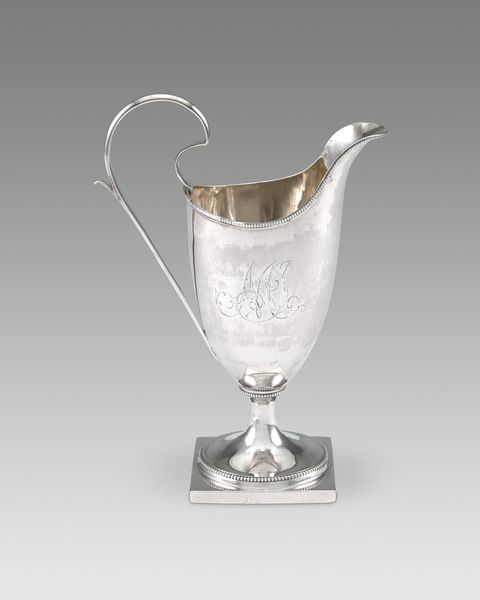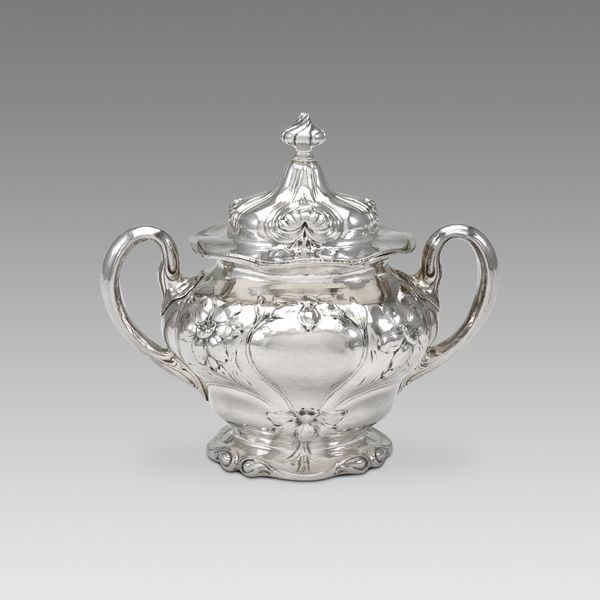
Dimensions: H. 4 1/4 in. (10.8 cm); Diam. 3 1/8 in. (7.9 cm)
Copyright: Public Domain
This sugar bowl was made by the American Flint Glass Manufactory sometime between 1764 and 1774, using clear glass. The bowl’s slightly uneven surface suggests a hand-made quality, achieved by blowing molten glass into a mold. The handles were likely applied separately. Notice the delicate engraved decorations: perhaps a demonstration of skill, intended to appeal to consumers. In the 18th century, sugar was a highly desirable commodity, associated with wealth and status. This sugar bowl represents an emerging American industry attempting to meet that demand. The American Flint Glass Manufactory tried to replicate luxury goods that would otherwise be imported from Europe. It reflects the desire to create high-end objects locally, rather than rely on foreign trade. Considering the materials and processes involved, we gain insight into the social context of the time. The sugar bowl embodies the intersection of craft, industry, and the economics of desire.
Comments
No comments
Be the first to comment and join the conversation on the ultimate creative platform.
